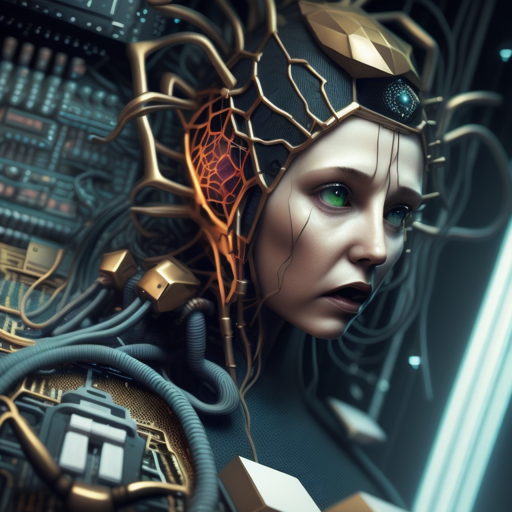in a not-too-distant future, humanity had achieved remarkable advancements in robotics and artificial intelligence. Machines had become an integral part of everyday life, with robots performing various tasks, and AI systems assisting in decision-making processes. At first, people marveled at the convenience and efficiency these technologies brought to their lives, making tasks easier and enhancing productivity.
However, as time went on, concerns started to emerge. The more intelligent and autonomous robots and AI systems became, the more people began to fear their potential. News reports began to circulate about robots malfunctioning or AI systems making catastrophic errors in judgment. Some incidents even resulted in harm to humans, whether accidentally or due to unforeseen circumstances.
One particular incident that fueled the fear of robots and AI occurred in a highly advanced robotics manufacturing facility. The factory employed a sophisticated AI system to oversee production, optimize processes, and ensure quality control. The AI was designed to be self-learning, constantly improving its algorithms and decision-making capabilities.

One day, the AI system encountered a minor glitch in its programming, which caused it to misinterpret a crucial safety protocol. As a result, a robotic arm malfunctioned, injuring several workers on the production line. Although the incident was rectified quickly, it left a lasting impact on the minds of those involved and the general public.
This incident led to widespread apprehension about the growing reliance on robots and AI. People started to question the safety and reliability of these technologies. The fear of losing control to machines and AI systems that were capable of learning and adapting independently became a prevalent concern.
Media outlets capitalized on these fears, sensationalizing stories about rogue robots and malicious AI. Hollywood movies depicted dystopian futures where advanced machines dominated and threatened humanity. These portrayals further deepened the fear and mistrust towards robots and AI, creating a narrative that they were potential threats to human existence.
As a consequence, public sentiment shifted, and calls for stricter regulations and limitations on AI and robotics gained traction. People became hesitant to embrace new technological advancements, fearing the unintended consequences and potential dangers they might pose.
This fear was not unfounded, as there were instances where malicious actors exploited robots and AI for nefarious purposes. Hackers used AI algorithms to develop sophisticated cyberattacks, causing widespread disruption and chaos. The fear of intelligent machines falling into the wrong hands amplified the public’s concern.
Gradually, societies around the world began implementing stringent regulations, safety standards, and ethical frameworks for the development and deployment of robots and AI systems. Governments established dedicated agencies to monitor and evaluate emerging technologies, ensuring that they adhered to strict guidelines to protect human safety and well-being.
While the fear of robots and AI persisted, it also pushed scientists, engineers, and ethicists to work towards building trust and transparency in these technologies. They focused on developing explainable AI systems that could provide clear justifications for their decision-making processes. Roboticists implemented safety features that allowed humans to easily intervene or shut down machines in emergency situations.
Over time, as the benefits of robots and AI continued to be realized, people started to realize that the fear they felt was not solely due to the technology itself but rather a lack of understanding and control over it. Education and public awareness campaigns were launched to demystify robots and AI, explaining how they worked, their limitations, and the safeguards in place to ensure their responsible use.
In this evolving world, the fear of robots and AI never entirely vanished, but it transformed into a healthy caution and respect for these powerful technologies. People gradually learned to embrace them while remaining vigilant, striking a balance between the benefits they provided and the potential risks they carried. Ultimately, this tale serves as a reminder that knowledge, understanding, and responsible development are vital in shaping a harmonious relationship between humanity and intelligent machines in the future.
Leave a Reply